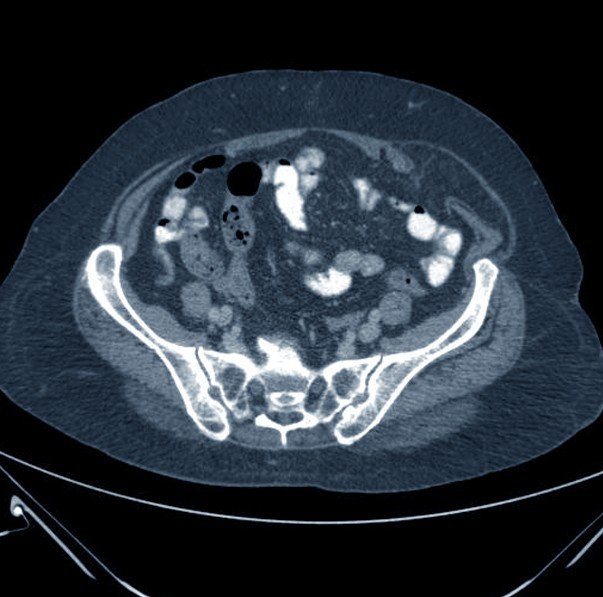Spigelian Hernia
Last reviewed by Dr. Raj MD on January 12th, 2022.
What is Spigelian Hernia?
Often known as a “Lateral ventral” hernia, this type of hernia is a form of hernia developing throughout the Spigelian fascia. This is unlike most hernias that grow right below the fat layers. Instead this type of hernia develops in amid the muscles in the wall of the abdomen. Due to the nature of this kind of hernia, there are very little outward signs of swelling, making the possibility for an issue of health to go undetected for longer time periods.
These hernias often begin someplace following the “Linea semilunaris” which is a tissue line located on either side of the “Rectus Abdominis”, with the causes for this type of hernia being comparable to the health issues leading to other types of hernias. This condition can develop because of weakening of the abdominal wall especially later in life, because of injury or because of prolonged periods of physical stress. A spigelian hernia may frequently be mis-identified for another type of problem abdominally.
Location
This type of hernia is rare and usually difficult to diagnose due to the location and hazy imprecise symptoms. They are normally located in between the layers of muscles in the wall of the abdomen and easily can be overlooked due to obesity in this area.
Spigelian Hernia Symptoms
The majority of types of hernia are located subcutaneously beneath the fat layers, so the presence might be felt as swelling that is abnormal. Now, this is not the case with a spigelian hernia. Identified as “interparietal hernia”, it is found inside the muscles of the walls of the abdomen.
Since it is a hernia that is sub-muscular, there is not any external swelling sign or bump with this type of hernia. As well, this kind of hernia is normally very tiny, adding to the difficulty in identifying. The common indicators of this type of hernia are intermittent mass as well as abdominal discomfort.
Pain is a noticeable sign in the actual location and comes and goes on a repeated basis. After the start of painful symptoms of a hernia, the individual experiences low or dull degree of pain in the immediate area.
This type of hernia is small, and the external soft tissue mass or lump may be felt by the individual, who has little fat in the area that is affecting the abdomen. In different individuals, decrease and functioning of the bowel and signs of obstruction bowel are observed and this tends to remain for more than only one day.
When a physician believes that an individual has this type of hernia, emphasis is given in the abdomen “linea arcuata”. It is taken for granted that the deficiency of “posterior rectus sheath” adds to the probability for increase of spigelian hernia in the linea arcutata portion. The physician will scrutinize the abdomen for the incidence of any lumps that are soft.
Because of the lack of major spigelian hernia symptoms, this medical problem is extremely hard to diagnose. In many cases, it stays concealed for a lengthy period of time. A good medical exam is done and imaging tests are also done to eliminate other health conditions. Spigelian hernia is confirmed based on CT scan results.
Spigelian Hernia Causes
This type of hernia normally is caused by pressure intra-abdominally pushing out a portion of an abdominal organ into the abdominal muscle layers. This type hernia is also known as “spontaneous” hernias since they often are created suddenly after trauma or injury to this abdomen area.
Chronic coughing, obesity as well as heavy-lifting as well as other factors cause this type of hernia to develop.
These hernias also may be the result of an inborn defect of connecting tissue, post-surgery infection, pregnancy, abdominal fluid as well as straining during bowel movement or urination.
Heredity is another issue in the chance of an individual developing this type of hernia. The lower part of the wall of the abdomen can weaken as conditions get worse due to time passing and the pressures of other activities.
Treatment
Surgery is usually needed to repair this type of hernia, since it is prone to strangulation. Conventional or laparoscopic surgery might be carried out to put any organs that were displaced back in correct place once the contents are detached from the hernia for suturing.
The abdominal wall that is injured is toughened with a surgical mesh in order to stop any recurrence. If this mesh is not in place, the hernia will be more likely to return. This repair with mesh is a basic process that is relied upon highly. The individual’s recovery time is relatively short – around two weeks – and is normally without incident following either method.
The laparoscopic method is usually favored in order to minimize any chances of infection as well as reduce the stay in the hospital. A post-surgery follow-up exam with the attending surgeon is common in order to exclude any complications so that normal activities may resume.
Spigelian Hernia Pictures
Collection of Pictures of Spigelian Hernia…
Spigelian Hernia Pictures 1
source: radiopaedia.org
Spigelian Hernia Photos
source: herniaclinik.com

